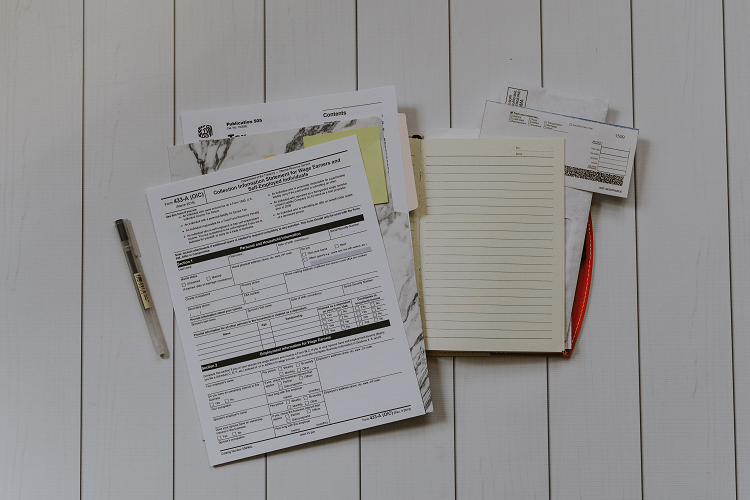Pesticides - What records do I need to keep?
It is important to keep thorough and accurate records of pesticides and their use for a number of reasons:
- Traceability for assurance and compliance
- Proof that pesticides have been used and/or stored in the correct and legal way
- Proof that the legal obligations have been met
- Stock control
- Benchmarking the use of pesticides to try to reduce future use for financial and environmental benefit
The following records must be kept:

- An inventory of the pesticides in the store - this must include:
- The date the pesticide was taken into the store, or removed from the store;
- Name of the pesticide and Ministerial Approved Pesticide Product (MAPP) number;
- Amount taken in, or, taken out;
- The amount of the pesticide remaining in stock;
- Signature of the person putting the pesticide into/out of the store, along with any relevant comments
This up-to-date stock list should be kept in duplicate with another copy kept in a separate location, e.g. the farm office
- Copies of the Material Safety Data Sheet (MSDS) for all pesticides used, kept in both the store and in a separate location. These documents inform users of their safe use both to the individual and wider environment. An MSDS also provides the information to allow a risk assessment to be completed as part of COSHH regulations.
- Copies of Extension of Authorisation for Minor Use (EAMU). These should be retained where approved off-label use has occurred and should be retained for 3 years.
- Spray application records for every field for a period of three years. These are required to show that the pesticide has been applied legally and in a safe and appropriate manner. These records need to include a range of details including when the pesticide was applied, who applied it, what was the reason for application, what the weather conditions were, which pesticides were used and their rate, environmental buffers observed etc.*
- Local Environmental Risk Assessment for Pesticides (LERAPs). It is a requirement to keep records for three years of LERAPs undertaken or where no LERAP is undertaken records must show that the buffer zone specified on the label was observed. When products requiring Drift Reduction Technology (DRT) are used records must be kept of the specified buffer distances used.
- Environmental Risk Assessments. These must be undertaken to show that all risks to the environment have been considered.
- Disposal Records. Waste Transfer Notes should be kept for two years with Special Waste Consignment Notes being kept for at least three years.
- Control of Substances Hazardous to Health (COSHH). Must be kept for until revised and shows that all risks have been assessed and legal obligations to people have been met. These should be updated regularly and reviewed immediately the previous review is no longer valid or work circumstances change significantly.
- Personal Protective Equipment testing records to show the maintenance, inspection and testing to control exposure to the operator as well as exposure in the wider workplace environment. These should be retained for 5 years.
- Records showing the monitoring of exposure to individuals and also Health surveillance. These should be retained for forty years and allow any negative health effect due to exposure to be identified and shows employers have carried out their legal obligations in terms of long term health surveillance.
While the list is substantial templates are readily available for most. Some of these can be found below:
- Health & Safety Executive - Local environmental risk assessment for pesticides
- Health & Safety Executive - Contol of Substances Hazardous to Health
- Scottish Quality Crops - SQC Farm Record Book
- Health & Safety Executive - Safety Data Sheets
*Good record keeping can help you observe harvest intervals, repeated application intervals and exclusion periods. Keeping good records can also allow the effectiveness of the application to be gauged. This can provide information on crop damage or even resistance issues providing the opportunity for improving both applications and pesticide use in future.
Sheep dip
SEPA have produced the following booklets to detail the regulations and requirements for farms handling sheep dipping chemicals:
SEPA (2023) Sheep Dipping Code of Practice for Scottish Farmers, Crofters and Contractors
SEPA (2006) Sheep Dipping Code of Practice for Scottish Farmers, Crofters and Contractors
Prior to any dipping occurring a Health and Safety risk assessment should be carried out and a list of Emergency contacts be available at the sheep dip store and made available to all contractors.
Disposal of waste dip, scum and silt trap contents into or onto land must be licensed by SEPA. To apply for a Special Waste Regulation Licence, visit the SEPA website here.
Records must be kept, in accordance with the licence, of all applications of sheep dip to land.
Disposal of waste sheep dip to land without a CAR Licence or failing to
comply with the conditions of such a Licence will constitute a breach of cross
compliance.
If you need to contact SEPA in an emergency, call the Hotline 0800 80 70 60
Sign up to the FAS newsletter
Receive updates on news, events and publications from Scotland’s Farm Advisory Service
